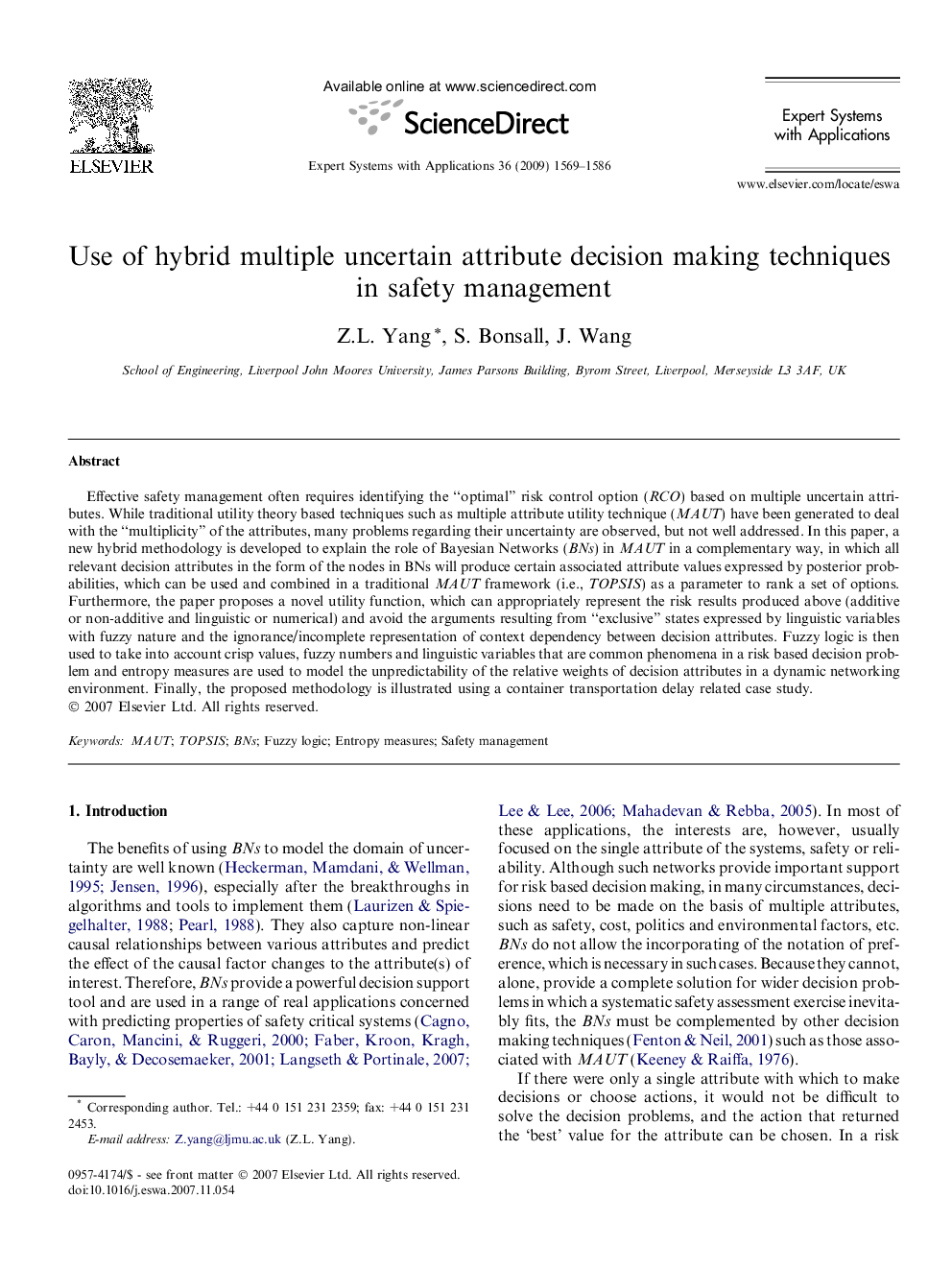| کد مقاله | کد نشریه | سال انتشار | مقاله انگلیسی | نسخه تمام متن |
|---|---|---|---|---|
| 385019 | 660858 | 2009 | 18 صفحه PDF | دانلود رایگان |

Effective safety management often requires identifying the “optimal” risk control option (RCO) based on multiple uncertain attributes. While traditional utility theory based techniques such as multiple attribute utility technique (MAUT) have been generated to deal with the “multiplicity” of the attributes, many problems regarding their uncertainty are observed, but not well addressed. In this paper, a new hybrid methodology is developed to explain the role of Bayesian Networks (BNs) in MAUT in a complementary way, in which all relevant decision attributes in the form of the nodes in BNs will produce certain associated attribute values expressed by posterior probabilities, which can be used and combined in a traditional MAUT framework (i.e., TOPSIS) as a parameter to rank a set of options. Furthermore, the paper proposes a novel utility function, which can appropriately represent the risk results produced above (additive or non-additive and linguistic or numerical) and avoid the arguments resulting from “exclusive” states expressed by linguistic variables with fuzzy nature and the ignorance/incomplete representation of context dependency between decision attributes. Fuzzy logic is then used to take into account crisp values, fuzzy numbers and linguistic variables that are common phenomena in a risk based decision problem and entropy measures are used to model the unpredictability of the relative weights of decision attributes in a dynamic networking environment. Finally, the proposed methodology is illustrated using a container transportation delay related case study.
Journal: Expert Systems with Applications - Volume 36, Issue 2, Part 1, March 2009, Pages 1569–1586